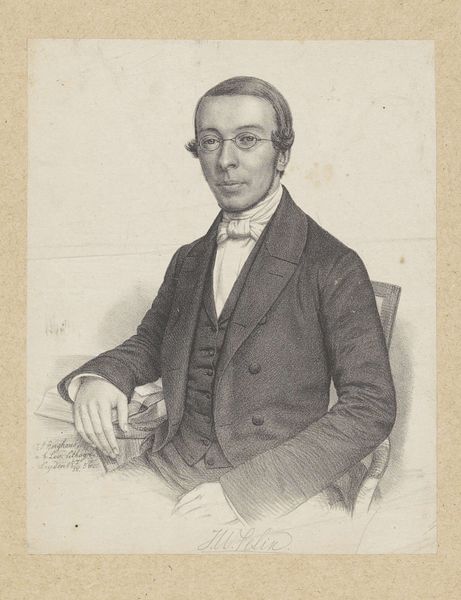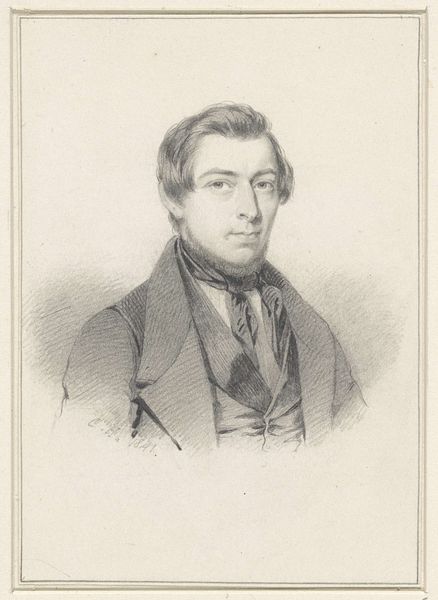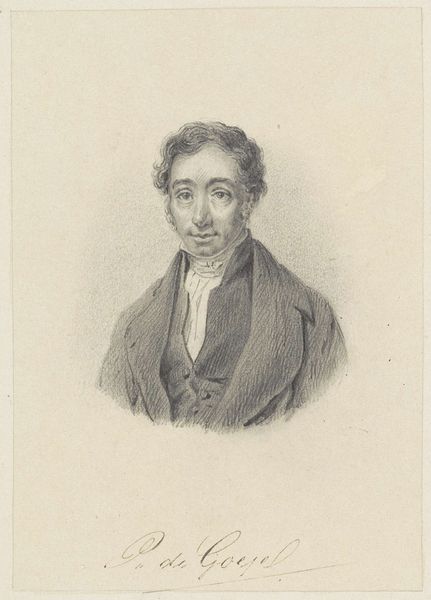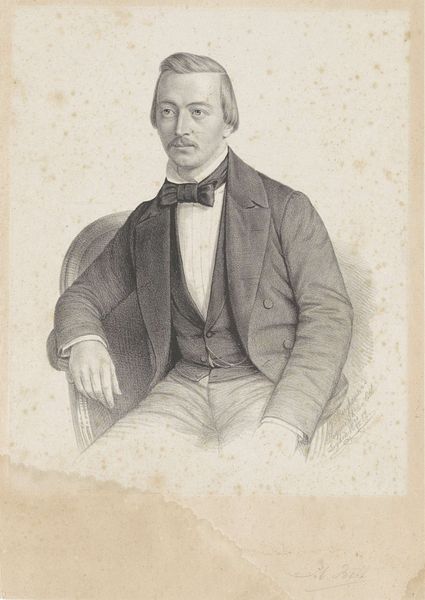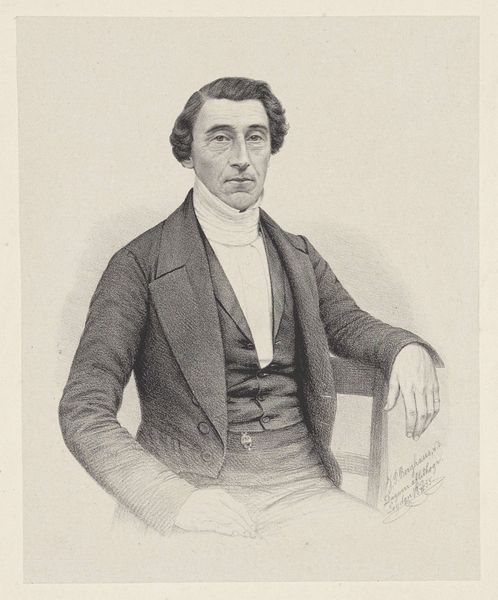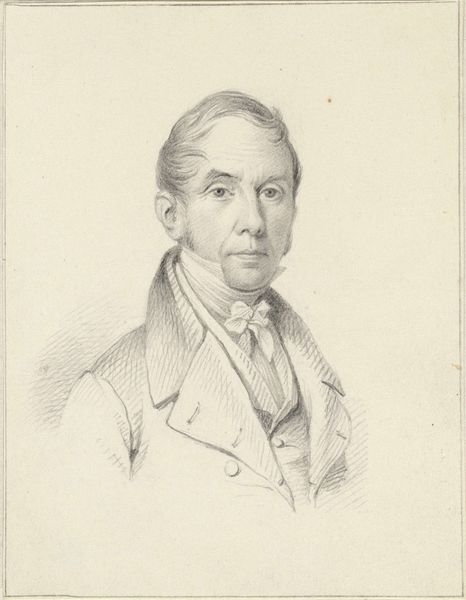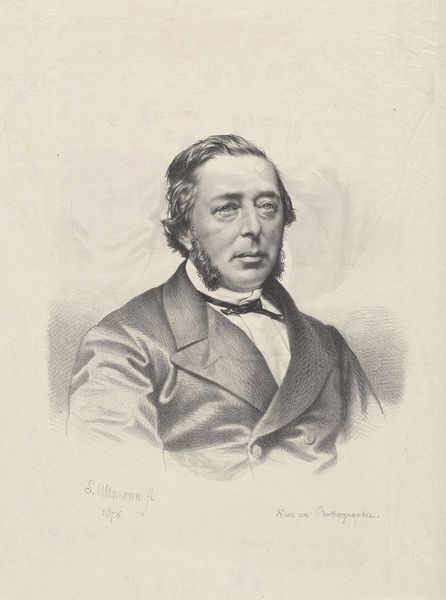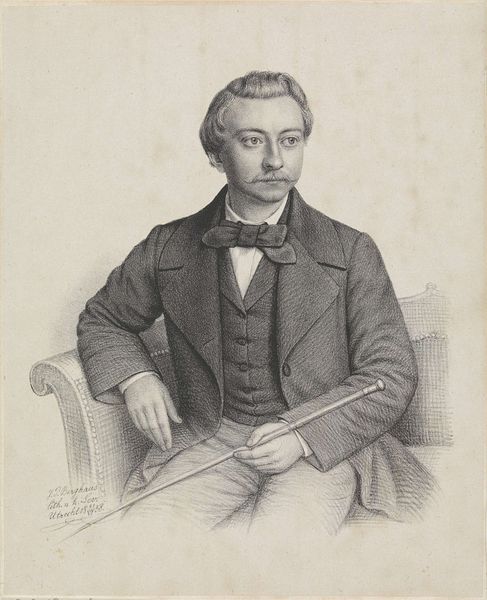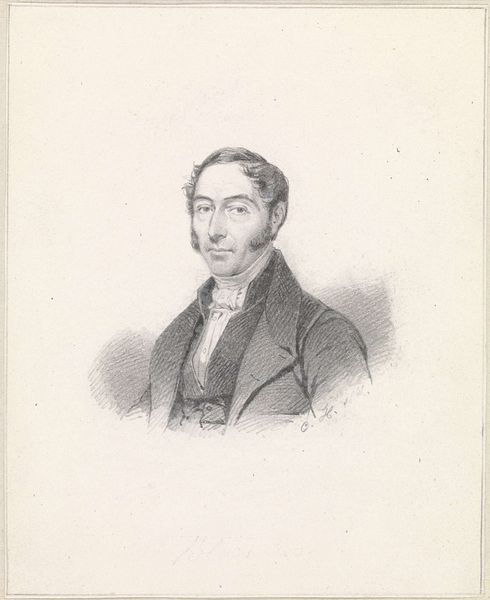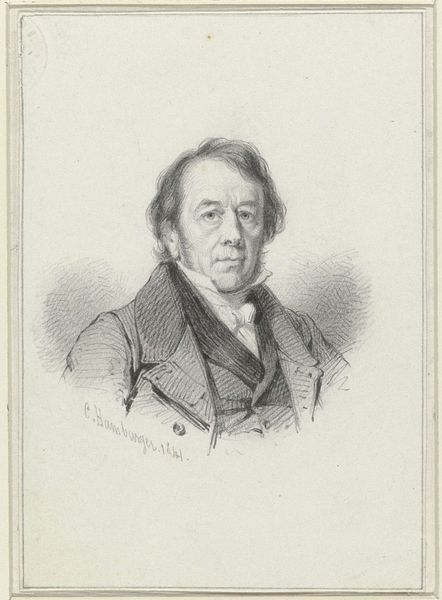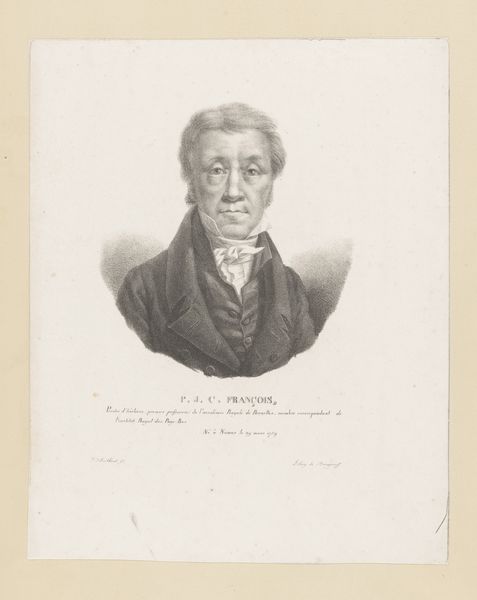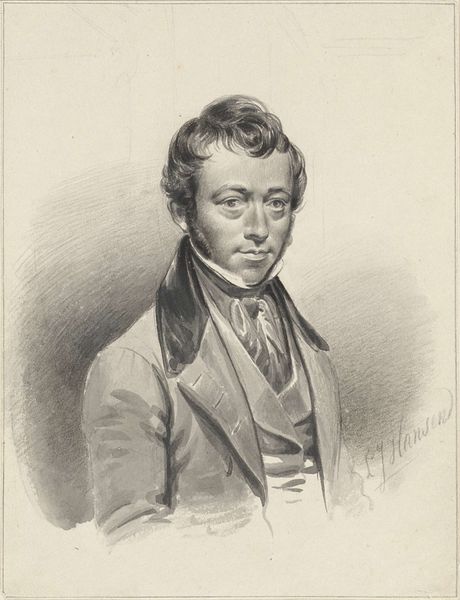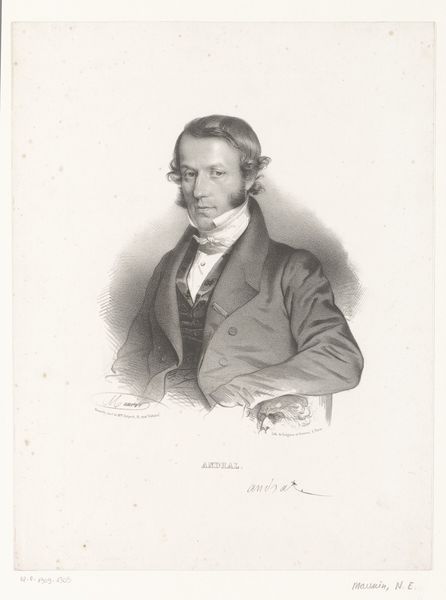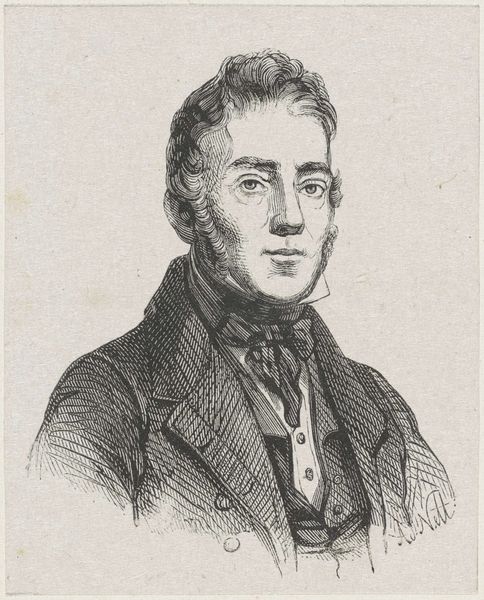
Portret van Frederik Hendrik Gijsbertus van Iterson Possibly 1855
0:00
0:00
johannpeterberghaus
Rijksmuseum
#
facial expression drawing
#
portrait image
#
portrait reference
#
portrait head and shoulder
#
yellow element
#
animal drawing portrait
#
portrait drawing
#
facial portrait
#
fine art portrait
#
digital portrait
Dimensions: height 437 mm, width 310 mm
Copyright: Rijks Museum: Open Domain
Editor: Here we have "Portret van Frederik Hendrik Gijsbertus van Iterson," possibly from 1855, by Johann Peter Berghaus. It looks like a lithograph, meticulously rendered. There's a formality and stillness to it. What catches your eye about this portrait? Curator: It's the lithographic process itself that I find fascinating. Think about the labour involved: the skilled artisan meticulously transferring the image to the stone, the grinding, the inking, the precise printing. The apparent 'stillness' you observed masks a flurry of material actions. How does this form of reproducible portraiture democratize image making, moving it beyond the realm of exclusively painted commissions for the elite? Editor: That's a really interesting point. The mass production aspect is key. Before, only the wealthy could afford portraits, right? So, how would this impact notions of celebrity or even just public identity? Curator: Precisely! Consider the availability of this image. This image enters a market—for consumption and dissemination, beyond the sitter or patron. Were these portraits widely circulated, or confined to certain social circles? Understanding its distribution helps reveal how it functioned within the social fabric. Furthermore, looking at the paper itself—its source, quality, and cost—adds another layer to our understanding of production and consumption in that era. What effect did it have on other drawing styles for popular media? Editor: I see what you mean. The material production deeply informs its cultural significance. Considering the cost and availability really shifts my understanding. Curator: Indeed. By focusing on the lithographic process and the socio-economic context surrounding its production and distribution, we move beyond mere aesthetics and delve into the material reality that shaped its meaning and impact. What, then, is lost when we transition to, say, photographic portraiture, or now to digital avatars? Editor: That is true, I didn’t think about the comparison to photographic portraiture. It helps me better appreciate the details of lithography as both art and industrial process!
Comments
No comments
Be the first to comment and join the conversation on the ultimate creative platform.
